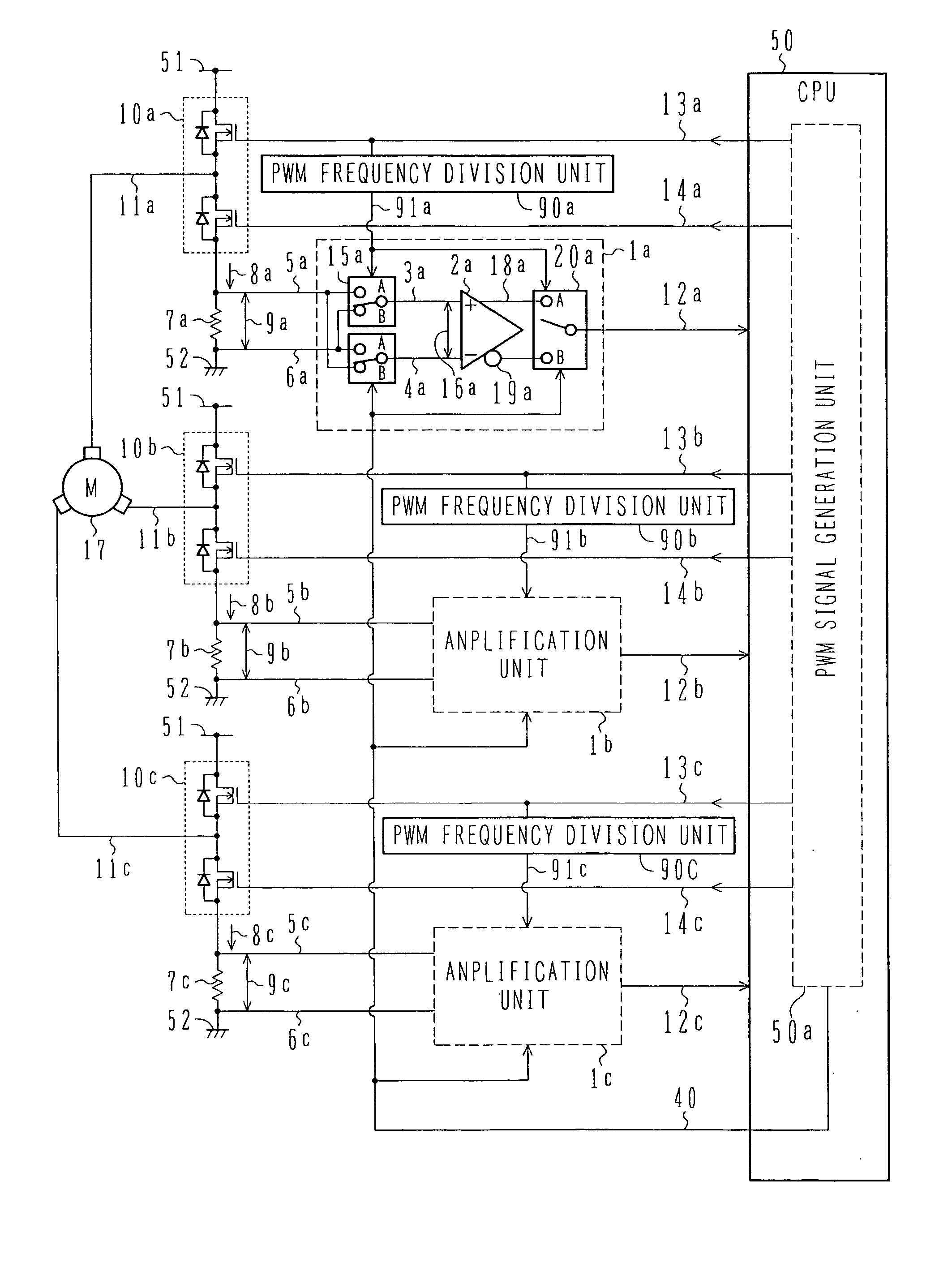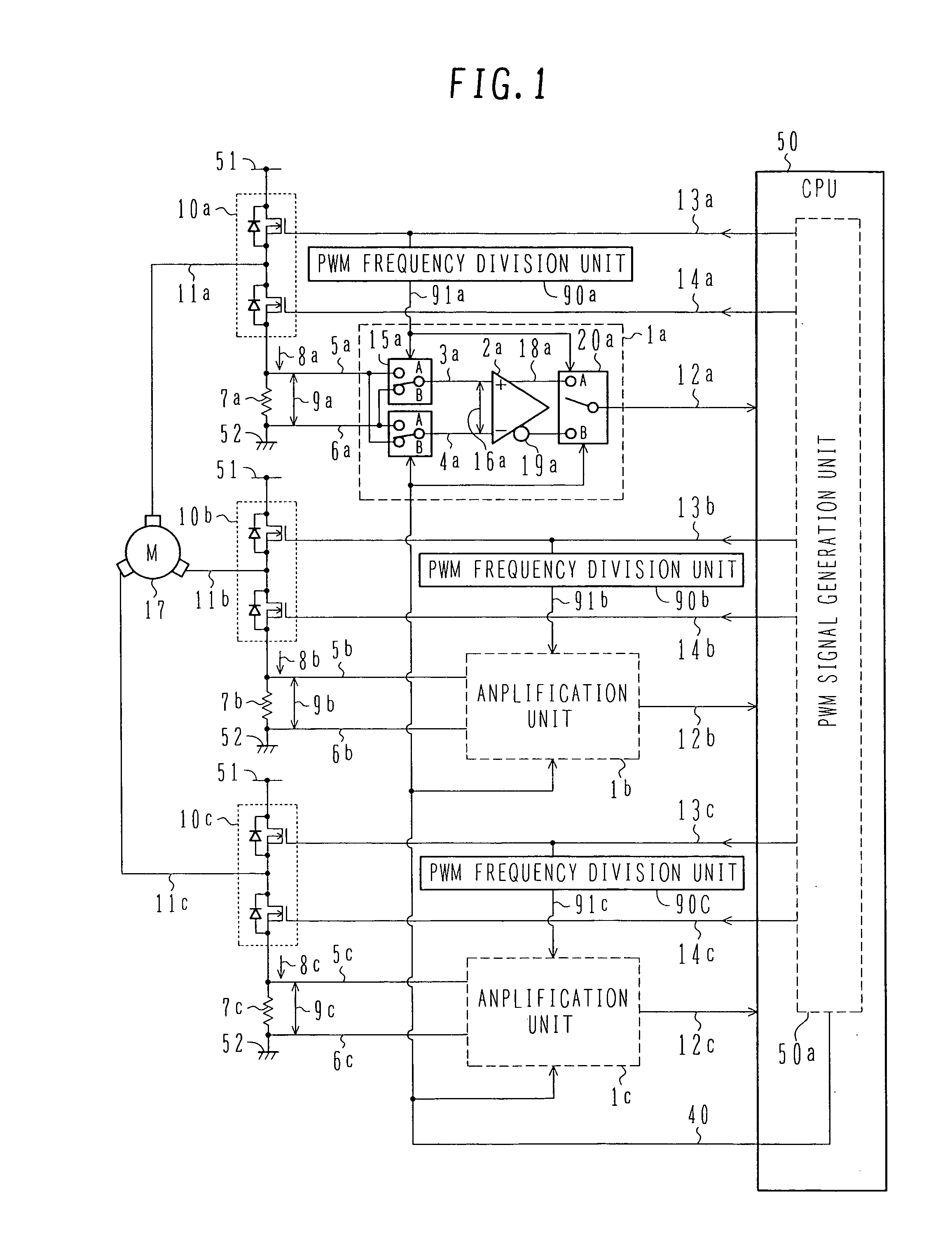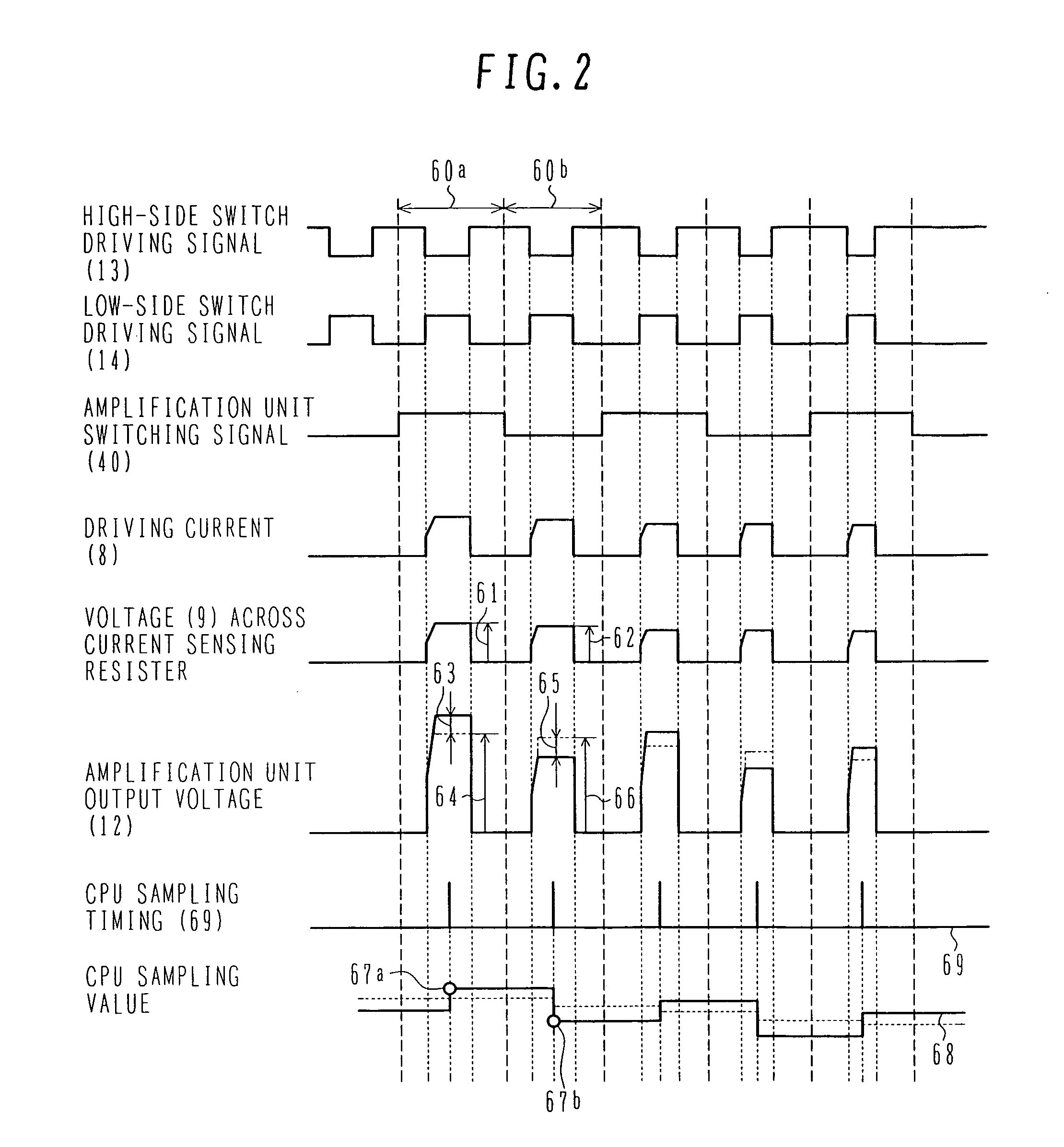Motor control system
a technology of motor control and control system, applied in the direction of electric controllers, ignition automatic control, instruments, etc., can solve the problems of torque ripple, increased current, and increased possibility of causing problems, and achieve the effect of low cost and high accuracy
- Summary
- Abstract
- Description
- Claims
- Application Information
AI Technical Summary
Benefits of technology
Problems solved by technology
Method used
Image
Examples
first embodiment
[0038]FIG. 1 is a circuit block diagram showing a motor driving-current sensing circuit according to a first embodiment of the present invention.
[0039] Referring to FIG. 1, reference numeral 1 (typically representing 1a, 1b and 1c for each of three phases) denotes an amplification unit for amplifying a voltage difference 9 across a current sensing resistor (shunt resistor) 7. The amplification unit 1 comprises an amplification circuit 2 for amplifying the difference between two positive (+) and negative (−) inputs, the amplification circuit 2 receiving a positive (+)-side input signal 3 and a negative (−)-side input signal 4 and outputting a positive gain output 18 and a negative gain output 19, an input switch unit 15 for alternately switching over connection between current sensing resistor terminal voltages 5, 6 and the positive (+)- and negative (−)-side input signals 3, 4 of the amplification circuit 2, and an output switch unit 20 for alternately switching over the two output...
second embodiment
[0061]FIG. 4 is a circuit block diagram showing a motor driving current sensing circuit according to a second embodiment of the present invention. In the following description of the second embodiment, a description of the same components as those in the first embodiment is omitted.
[0062] In FIG. 4, reference numeral 21 denotes a voltage smoothing unit for smoothing the amplification unit output voltage 12 outputted from the amplification unit 1, and 68 denotes an average voltage. Further, a current sensing resistor (shunt resistance) 7 is disposed between the high-side switch and the low-side switch of the driving switch circuit 10, and voltages at opposite terminals of the current sensing resistor 7 are inputted to the amplification unit 1.
[0063] The operation of this second embodiment will be described below with reference to FIG. 5.
[0064] As shown in FIG. 5, when the driving current for driving the motor 17 is supplied by turning on / off the driving switch circuit 10 in accord...
third embodiment
[0066]FIG. 7 is a circuit block diagram showing a motor driving current sensing circuit according to a third embodiment of the present invention. A description of the same components as those in the foregoing embodiments is omitted here. In FIG. 7, reference numeral 24 denotes a voltage shift unit disposed between the amplification unit 1 and the CPU 50 to receive the amplification unit output voltage 12.
[0067]FIG. 8 is a timing chart showing the operation of the motor driving current sensing circuit according to the third embodiment.
[0068] When the motor driving current is supplied by turning on / off the driving switch circuit 10 in accordance with the high-side switch driving signal 13 and the low-side switch driving signal 14, the driving current 8 flows through the current sensing resistor 7 and a waveform indicated by a voltage 9 across the current sensing resistor is detected between the opposite terminals of the current sensing resistor 7. When the voltage 9 is very small an...
PUM
 Login to View More
Login to View More Abstract
Description
Claims
Application Information
 Login to View More
Login to View More - R&D
- Intellectual Property
- Life Sciences
- Materials
- Tech Scout
- Unparalleled Data Quality
- Higher Quality Content
- 60% Fewer Hallucinations
Browse by: Latest US Patents, China's latest patents, Technical Efficacy Thesaurus, Application Domain, Technology Topic, Popular Technical Reports.
© 2025 PatSnap. All rights reserved.Legal|Privacy policy|Modern Slavery Act Transparency Statement|Sitemap|About US| Contact US: help@patsnap.com



